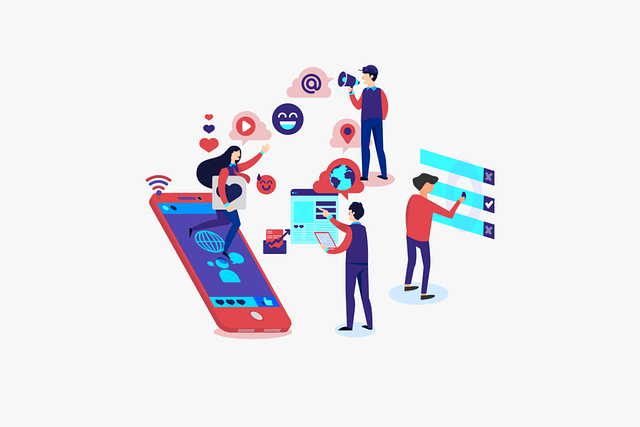Segmenting audiences and personalizing landing pages boosts engagement and conversions. Using demographics, behavior, and CRM data, target specific groups with tailored content, design, and offers. Automation tools analyze user interactions for dynamic, relevant recommendations. Visual brand consistency enhances recognition and trust. Personalized CTAs, like product-specific calls to action, drive better results. A/B testing optimizes landing pages based on audience engagement data, refining campaign effectiveness. SEO keywords like "landing page for campaigns" increase targeted reach.
In today’s competitive marketing landscape, personalizing campaign landing pages is no longer an option—it’s a necessity. Effective targeting begins with understanding audience segments, allowing marketers to tailor content and visual design to meet specific customer needs. By implementing personalized calls-to-action and leveraging A/B testing strategies, brands can optimize their landing pages for maximum impact. Discover how these techniques drive conversions and elevate your campaign landings to new heights.
- Understanding Audience Segments for Targeted Campaigns
- Tailoring Content to Match Specific Customer Needs
- Visual Design Choices: Unifying Brand Identity
- Personalized Calls-to-Action for Higher Conversions
- A/B Testing Strategies for Continuous Optimization
Understanding Audience Segments for Targeted Campaigns

Segmenting your audience is a critical step in crafting effective campaign landing pages. By understanding who you’re targeting, you can tailor content, design, and offers to resonate with each specific group. This level of personalization significantly improves engagement and conversion rates on landing pages for campaigns. For instance, segments could be defined by demographics, purchase history, browsing behavior, or even stage in the customer relationship management (CRM) pipeline.
Knowing your audience allows you to employ targeted marketing strategies like text message marketing, where personalized messages can have a direct and immediate impact. This approach ensures that each visitor feels seen and understood, creating a more compelling experience on the landing page. As a result, it fosters trust and encourages them to take the desired action, be it making a purchase, signing up for a newsletter, or downloading an e-book.
Tailoring Content to Match Specific Customer Needs

In the realm of campaign landing pages, personalization goes beyond basic design aesthetics. By leveraging marketing automation tools and understanding customer demographics, businesses can tailor content to match specific needs. This involves more than just generic “call-to-actions” – it means delivering targeted messages that resonate with individual user profiles, interests, and even past interactions with the brand. For instance, a social media marketing automation platform could analyze user behavior on social media channels to curate personalized product recommendations or create dynamic content sections on a campaign landing page.
This level of customization creates a more engaging experience for potential customers, increasing the likelihood of conversions. Automation streamlines this process, allowing marketers to efficiently personalize numerous landing pages for diverse audience segments without manual intervention. Ultimately, this strategic approach leverages data-driven insights to deliver highly relevant content, fostering stronger connections with target audiences and driving better campaign results.
Visual Design Choices: Unifying Brand Identity

In designing a landing page for campaigns, visual design choices play a pivotal role in communicating your brand identity to targeted audiences. Unifying brand elements such as colors, typography, and imagery across all campaign assets ensures consistency that reinforces recognition and builds trust. When creating a landing page, it’s crucial to align the visual aesthetics with your brand guidelines, ensuring every element resonates with your target market.
A well-designed landing page not only captures attention but also guides visitors through a sales funnel effectively. Integrating these design principles seamlessly with automation from social media marketing tools can enhance the overall user experience. By streamlining the process via marketing automation, you enable prospects to engage with your campaign at a personalized level, increasing conversions and driving sales.
Personalized Calls-to-Action for Higher Conversions

Personalized calls-to-action (CTAs) can significantly enhance the effectiveness of a campaign landing page, leading to higher conversion rates. By tailoring CTAs to specific audience segments, businesses can create a more compelling and relevant experience for each visitor. For instance, a personalized CTA might encourage an existing customer to “Update their Profile” or offer a special discount to a first-time buyer. This level of customization not only boosts engagement but also increases the likelihood of desired actions, such as making a purchase or subscribing to a newsletter.
In the context of an ecommerce solution, personalizing CTAs can mean showing product-specific calls to action like “Add to Cart” or “Buy Now” on relevant landing pages. For social media marketing automation, missed call text back services can be integrated to provide immediate responses, further personalizing the user experience. These strategies collectively contribute to a more interactive and successful campaign, ultimately driving better results in various digital marketing efforts.
A/B Testing Strategies for Continuous Optimization

To continually optimize campaign landing pages for targeted audiences, A/B testing strategies are an indispensable tool. This process involves creating two or more variations of a landing page – with slight design, copy, or call-to-action (CTA) differences – and then directing segments of your audience to each version to measure performance. By analyzing user engagement, conversion rates, and click-through rates for each variant, you gain valuable insights into what resonates best with different groups.
For example, you might test a landing page featuring a prominent “Missed Call Text Back” CTA against one that uses a more generic “Learn More” button. Or, experiment with different email marketing integrations within the landing page to see which drives the most conversions along the sales funnel. The key is to approach A/B testing systematically, identifying specific elements for variation and consistently monitoring results to refine your campaign’s effectiveness.
By understanding and segmenting your audience, tailoring content, and employing strategic design and call-to-action choices, you can create highly personalized campaign landing pages. This approach not only enhances user experience but also drives conversions by addressing specific customer needs. Regular A/B testing ensures continuous optimization, making your landing pages a dynamic element of your marketing strategy that adapts to audience preferences and market trends. Implement these techniques to maximize the impact of your campaigns through effective landing page design.
